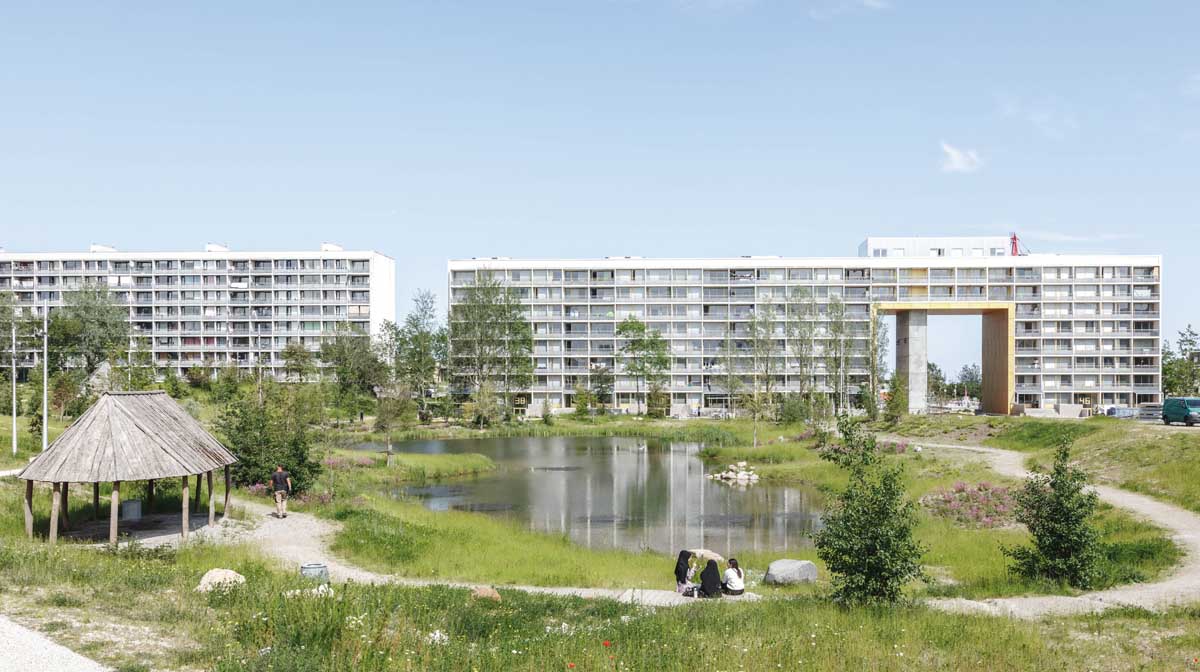Gellerup and Toveshøj districts in Denmark are in the process of being transformed from a socially challenged neighbourhood into an attractive and integrated part of Aarhus City.
EFFEKT’s 2009 winning proposal for a new masterplan for Gellerup sets the scene for this transformation and in many ways breaks with the rational urban planning and architecture of the 1960s modernism. The green spaces in Gellerup Toveshøj play a central part in the development of the area as an attractive part of Aarhus.
During the 1960s and 1970s, communities of large-scale high-rise housing estates were built to meet the after-war housing shortage. At first, these neighbourhoods were considered attractive as they offered modern luxury apartments and green facilities, located on the outskirts of the main cities and provided a calm and relaxing environment for working families. However, in most countries, these new high-rise neighbourhoods enjoyed only a short time of popularity before they became segregated and associated with problematic living conditions, crime, poverty and marginalisation.
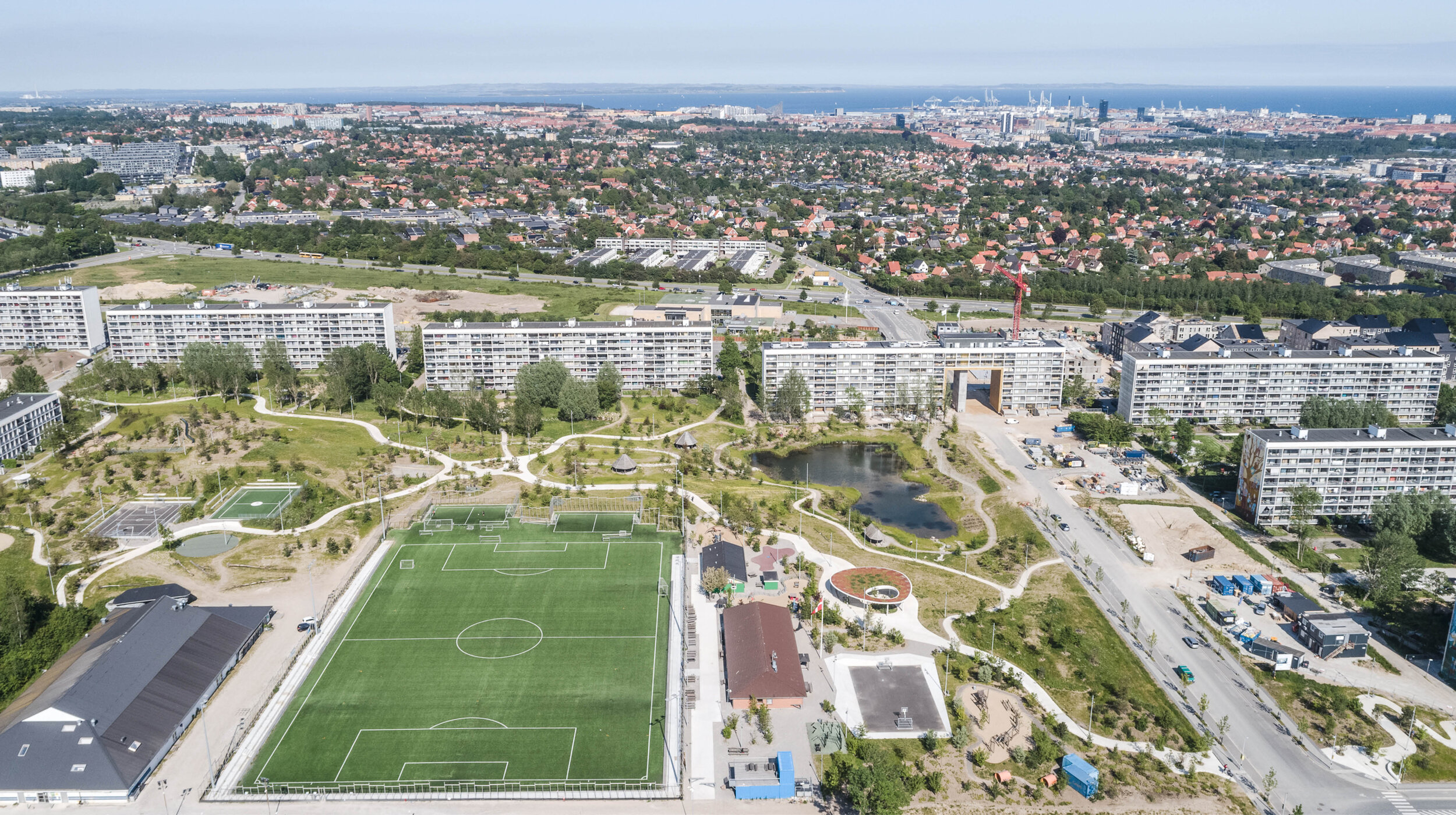
In recent years, urban renewal programs have become a key concept underpinning policies which aim to address these problems and to target both the physical and social environment.
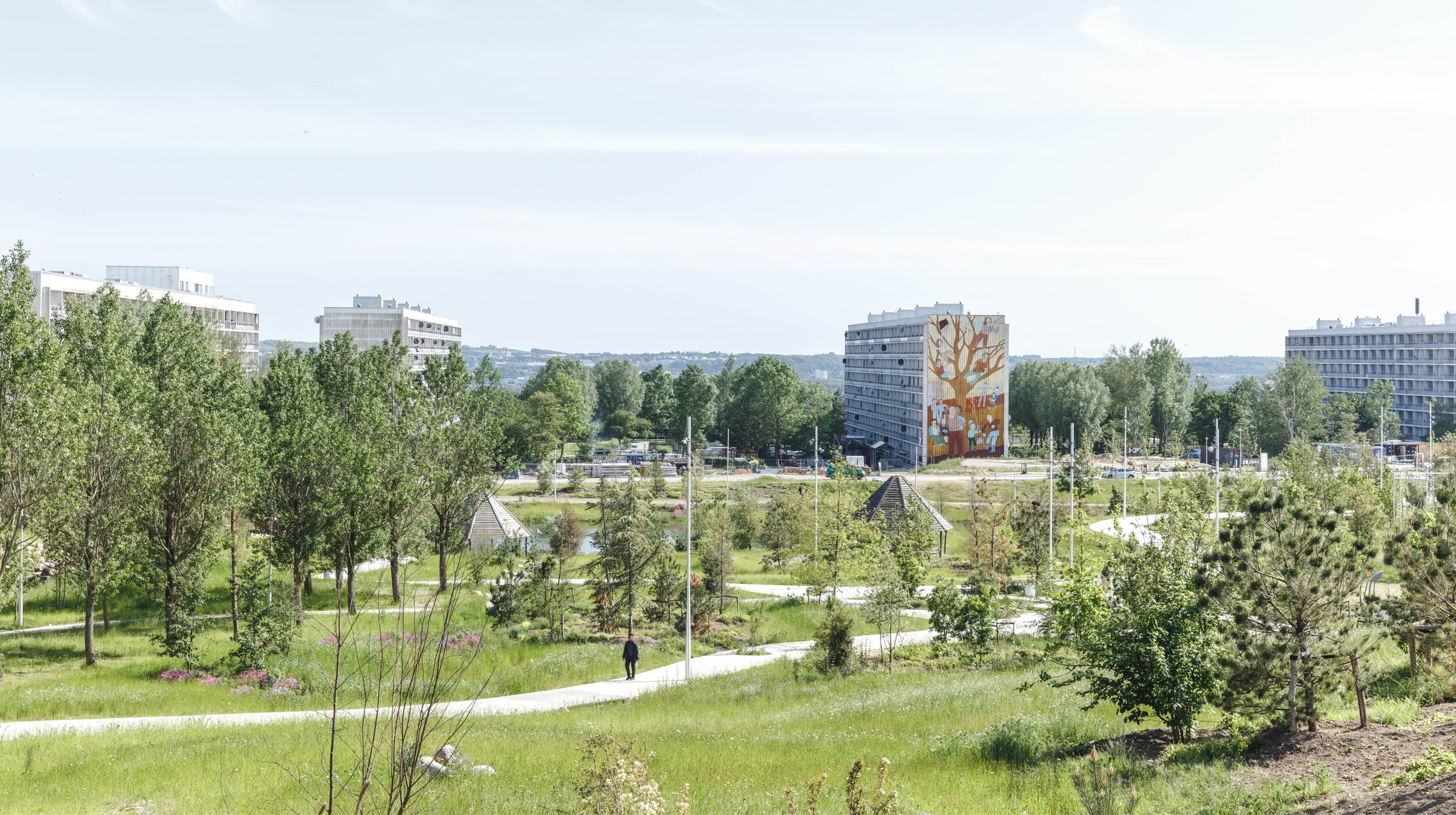
Gellerup, a low-income neighbourhood in the city of Aarhus, Denmark, has constantly attracted national and political attention. The community has undergone numerous expensive initiatives to overcome the continuing problems, and lately Gellerup has been characterised as a mono-functional ghetto, meaning that the area is without or with limited business activities, cultural and educational institutions.
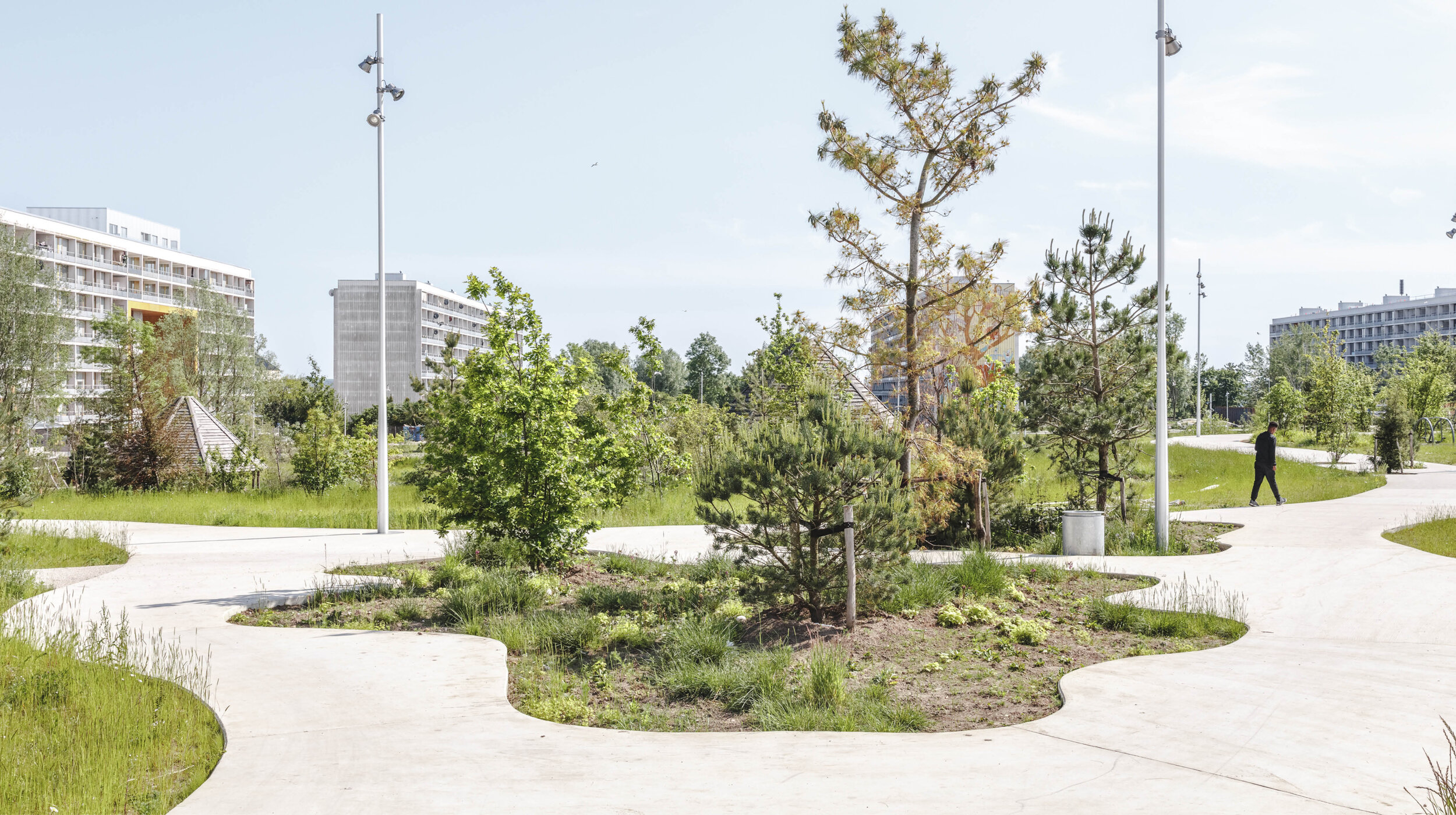
In 2010, the Danish government approved the most expensive high-rise renewal plan in Danish history, the purpose being to promote and stimulate a development of social capital in the neighbourhood.
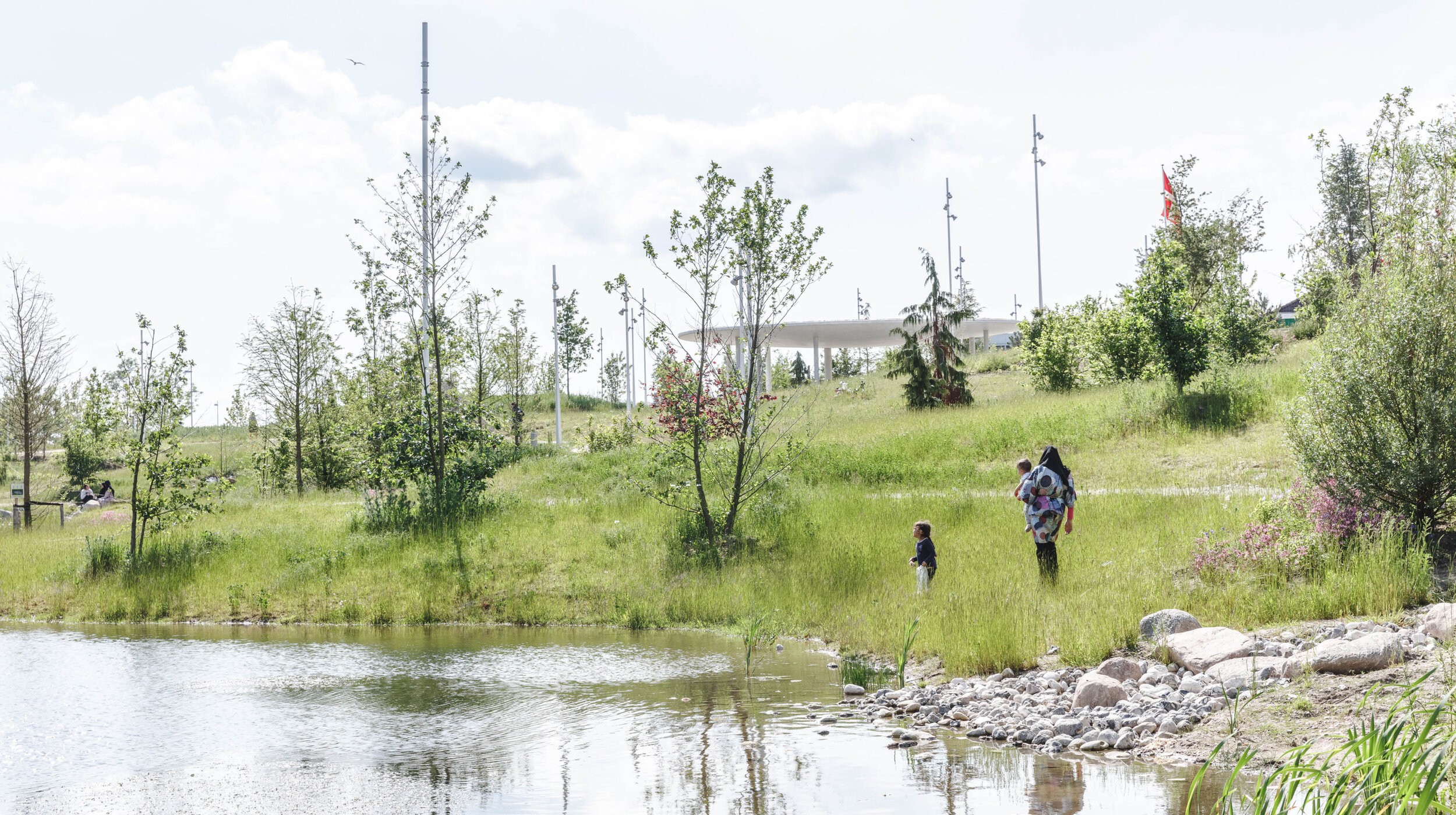
Central to this redevelopment is the addition of new green spaces to open up the area to its surroundings both physically and psychologically, creating a missing link to Aarhus, reconnecting the green space with the two dominant landscape areas Skjoldhøjkilen and Brabrand Ådal.
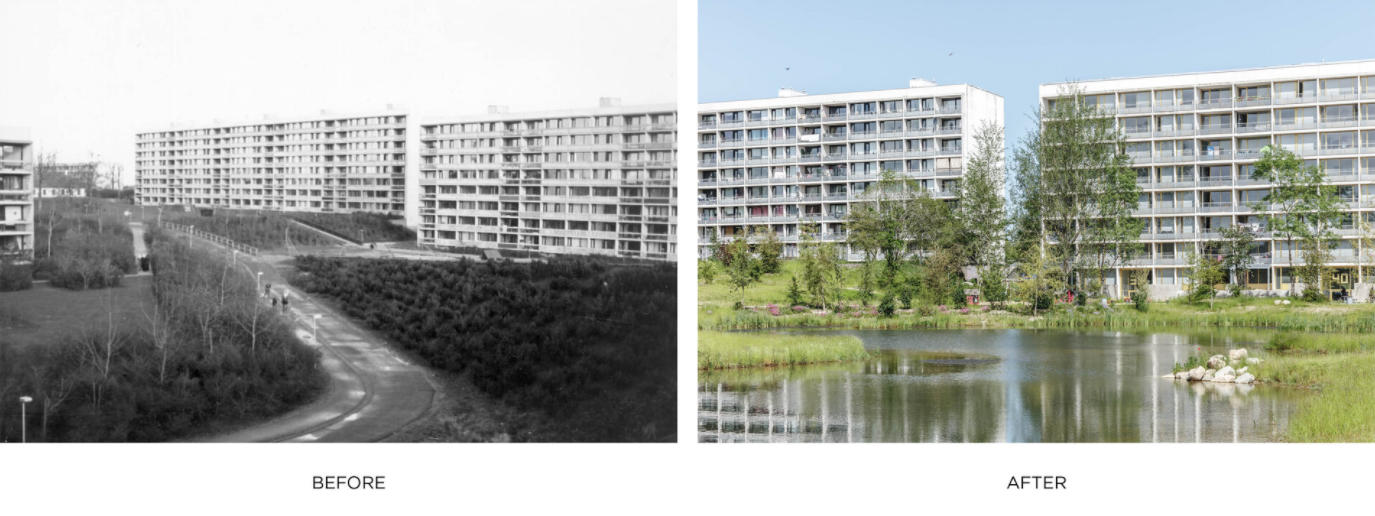
EFFEKT worked holistically with the many elements of the park – terrain, landscape, rainwater, plants, network, activities, and “special places”, and believed that the project represents a robust and long-lasting strategy for the new green spaces of Gellerup.
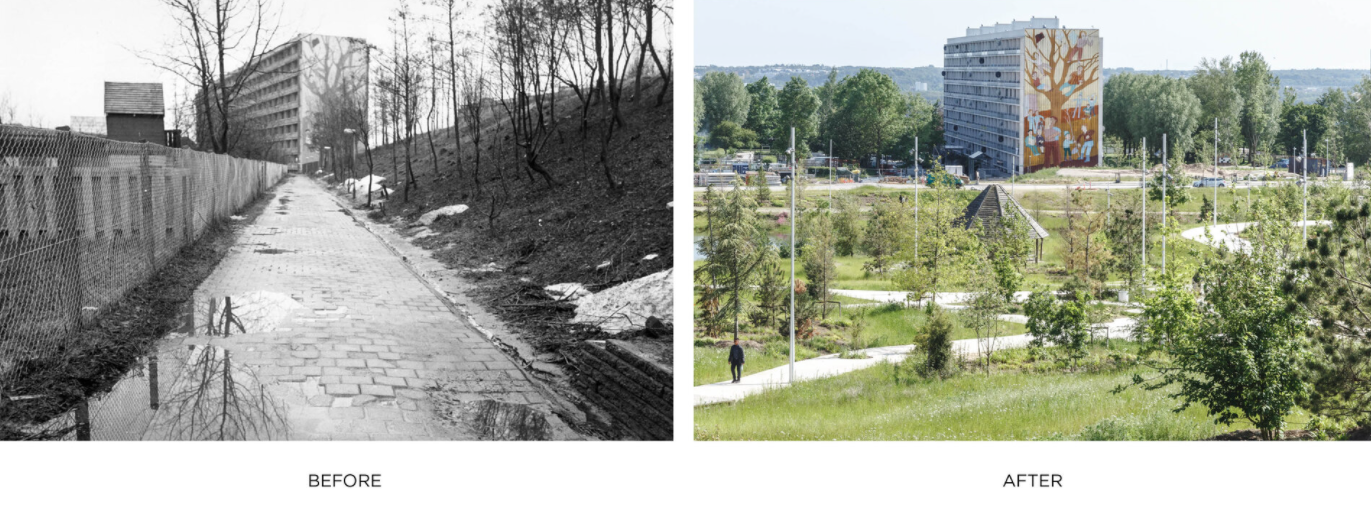
The architects say “The intention was not to create one single controlling concept to which all other elements would adhere – on the contrary, the project consists of a number of different elements referencing the wild uncontrolled nature. These work together and complement each other in the dynamic and exciting green space. The new green space creates a completely new storyline for Gellerup Toveshøj and will contribute positively to the great and ambitious transformation the area is undergoing.”

